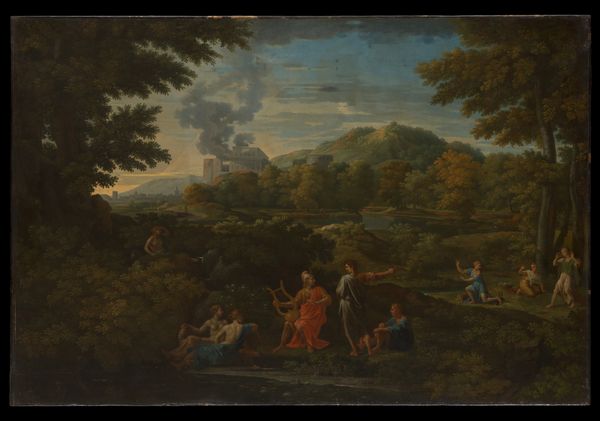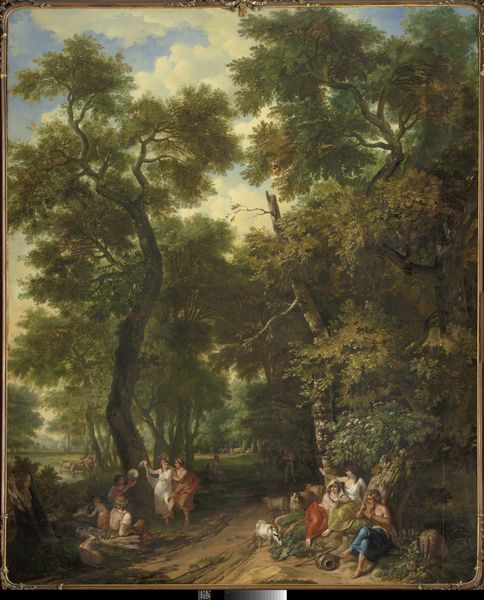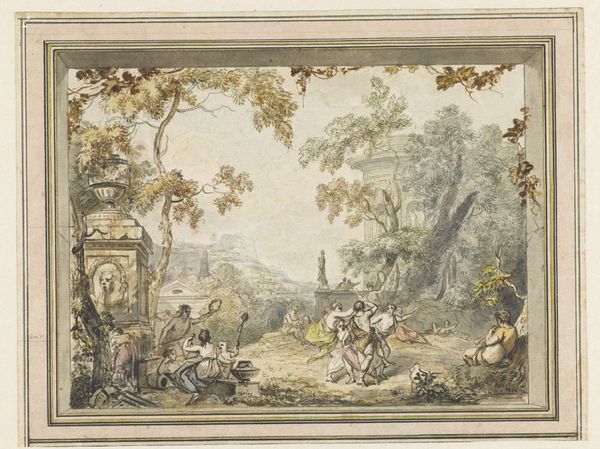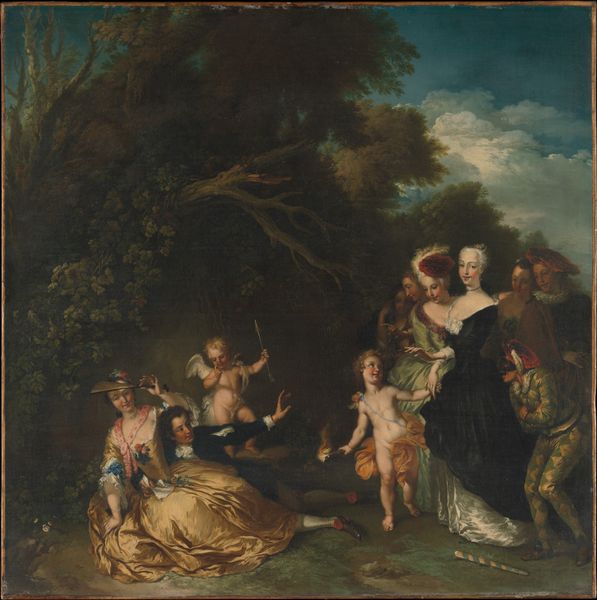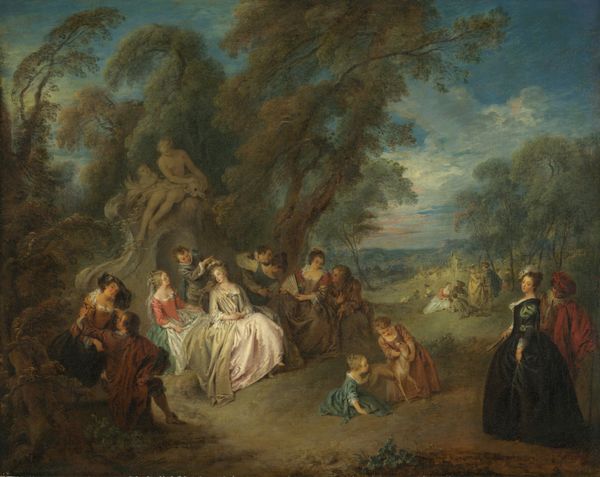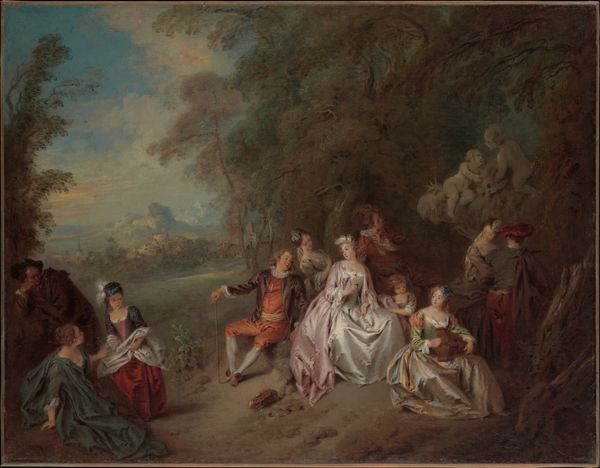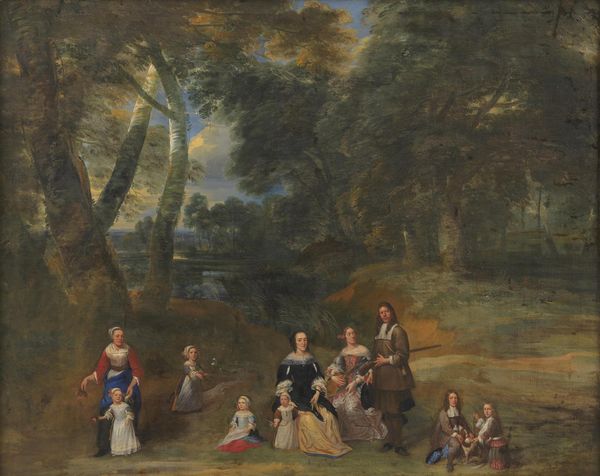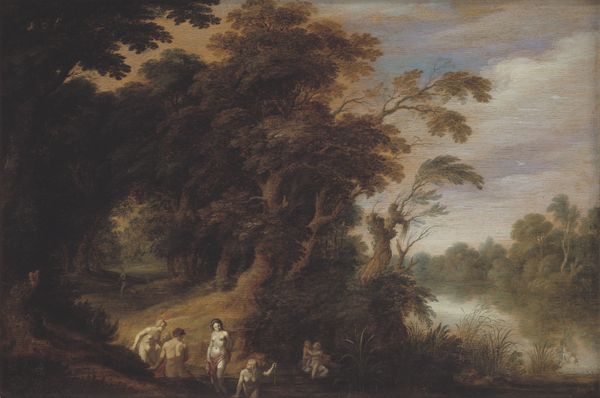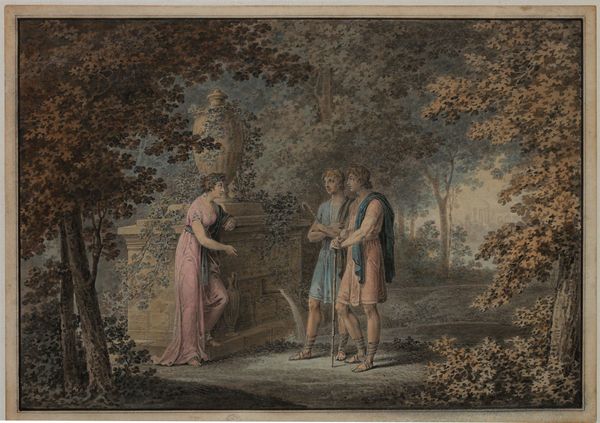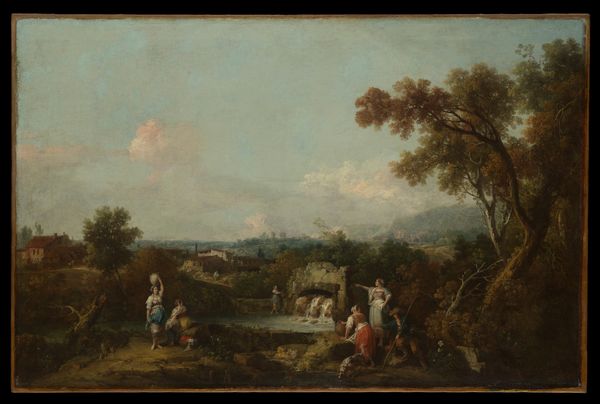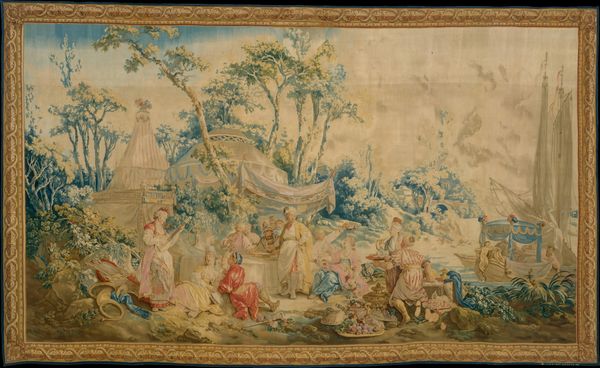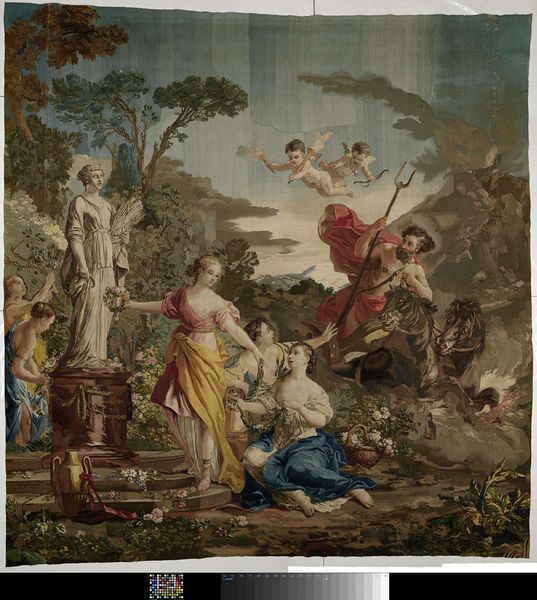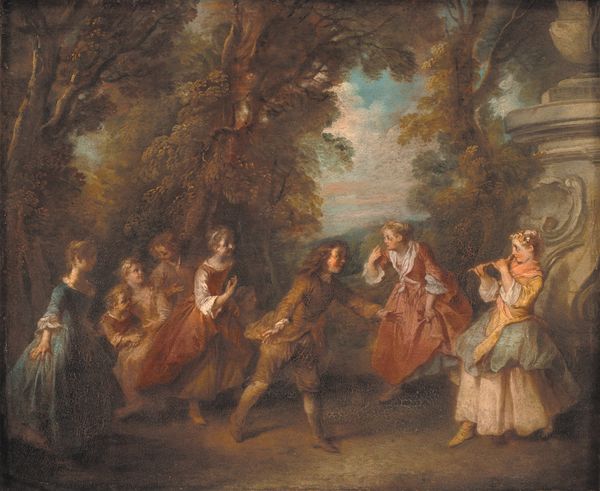
Dimensions: 6 3/8 x 9 in. (16.2 x 22.9 cm)
Copyright: Public Domain
Curator: Before us hangs Jean-Baptiste Joseph Pater’s “The Golden Age,” painted between 1715 and 1736. It’s currently held at the Metropolitan Museum of Art. Editor: It's charming. There's a delicate quality to the rendering of light and figures. It evokes a whimsical sense of pastoral fantasy. The pastel palette creates a soothing effect, doesn't it? Curator: The means of production are what draw me in here. Pater, a student of Watteau, worked within a robust system of patronage. The materials themselves, likely sourced from specific suppliers, are integral to understanding the work’s societal position. The application of oil paint, sometimes described as watercolor-like, reflects artistic innovation, while being bound by availability and financial considerations. Editor: Indeed, I'm captivated by the arrangement of forms and the subtle chromatic shifts that lend the painting a distinctive, airy quality. Look how the figures, seemingly caught mid-motion, weave a dance across the pictorial space. This carefully balanced composition directs our eye in a rhythmic movement around the canvas. Curator: Consider the figures: are they aristocratic children enacting a game, or are they an allegory of leisure allowed only to some? The materiality points us to the economic structure allowing the elite to have such diversions. Their clothing signifies status as much as it indicates aesthetic preferences. Editor: Semiotically, this can be interpreted as a constructed idyllic scene rather than simply a casual snapshot. Even that small dog there serves as a visual emblem representing fidelity, contributing to the sense of warmth. I wonder if Pater knowingly infused his representation with these layers. Curator: Possibly, and thinking further about materials, the canvas and the quality of pigment, indicate a specific consumer base. Were there alternatives and were they as effective? The context of display—wealthy homes likely--and how it functioned aesthetically is vital to understanding Pater’s creation. Editor: Ultimately, Pater seems successful in weaving a dream world where the figures become ciphers of beauty itself. It is less about verisimilitude, or mirroring social reality, and more about artistic license. Curator: Agreed, seeing it through this lens gives us a deeper appreciation of artistic talent within the context of production, access and consumption. Editor: Exactly! And, if we step back to consider its aesthetic elements, there's so much visual dynamism here.
Comments
No comments
Be the first to comment and join the conversation on the ultimate creative platform.
